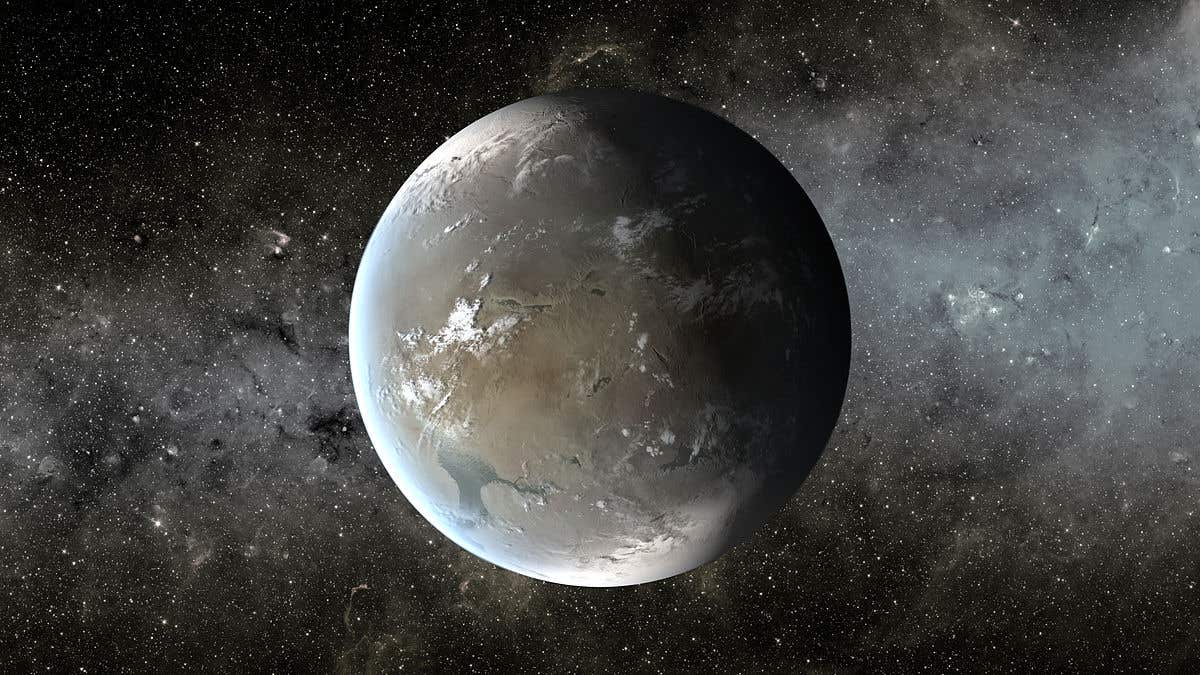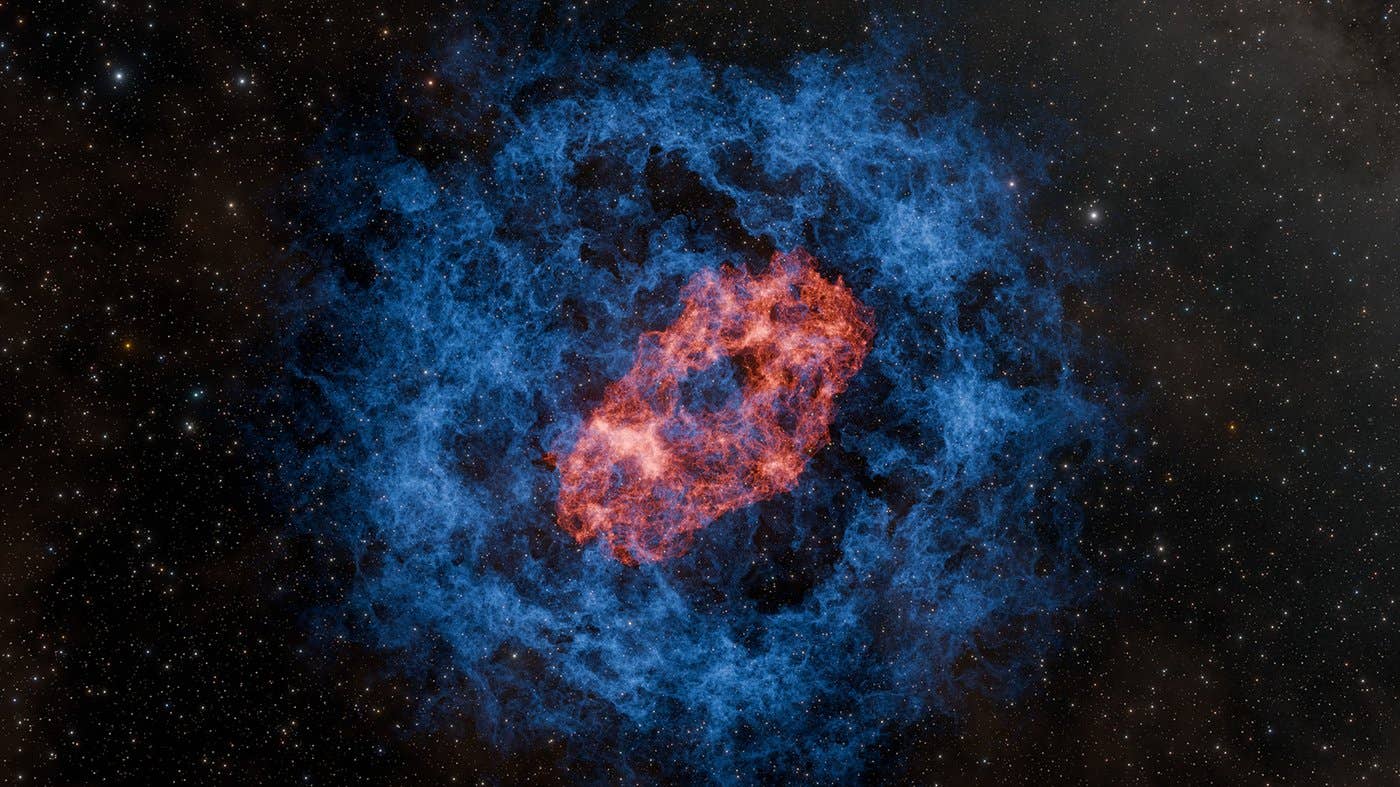Scientists discover the closest Earth-sized planet to our solar system
Scientists in the United States have confirmed the existence of a fascinating exoplanet just 22 light-years away from our Solar System

[Nov. 18, 2023: JJ Shavit, The Brighter Side of News]
LTT 1445 Ac, orbits a small red dwarf star and represents the closest known Earth-sized exoplanet to our celestial neighborhood. (CREDIT: Wikimedia Commons)
In a significant astronomical discovery, scientists in the United States have confirmed the existence of a fascinating exoplanet just 22 light-years away from our Solar System. This newfound world, known as LTT 1445 Ac, orbits a small red dwarf star and represents the closest known Earth-sized exoplanet to our celestial neighborhood.
LTT 1445 Ac is a tantalizing celestial body, boasting dimensions that are remarkably similar to our own planet. It possesses approximately 1.37 times the mass and 1.07 times the radius of Earth.
While the scorching temperatures on LTT 1445 Ac make it inhospitable for life as we know it, its striking resemblance to Earth classifies it as an Earth analog—an object that closely mirrors our home planet. This discovery presents a golden opportunity for scientists to delve into the intricacies of planetary evolution and discern the factors that differentiate one Earth-like world from another.
The journey to confirming the existence and properties of LTT 1445 Ac was far from straightforward. The exoplanet initially appeared on the radar of astronomers through data collected by the Transiting Exoplanet Survey Satellite (TESS) in 2021. However, due to certain observational challenges, astronomers couldn't be entirely certain about the exoplanet's characteristics.
Related Stories
One of the unique aspects of LTT 1445 Ac's cosmic address is its location within an unusual stellar system. The exoplanet orbits a star that is part of a trinary system, where three stars are gravitationally bound together. This complex arrangement posed additional challenges for researchers attempting to observe and analyze the exoplanet.
When studying exoplanets, scientists primarily rely on detecting changes in the light emitted by the host star. However, in multi-star systems like LTT 1445 Ac's, the gravitational interactions between the stars can influence the starlight. Despite the relatively short 22-light-year distance to LTT 1445 Ac, observing an Earth-sized exoplanet in such a complex system is a formidable task.
To comprehensively understand an exoplanet's properties, researchers ideally need two types of measurements: transit data and radial velocity data. Transit data involves monitoring the slight dimming of a star's light when an orbiting exoplanet passes in front of it. Radial velocity data, on the other hand, records the subtle wobbling of a star due to the gravitational pull of an exoplanet, inferred from changes in the starlight's wavelength.
This image shows LTT 1445, a nearby triple M-dwarf system with the primary A hosting an exoplanet. The image was created with SAO Image DS9, the data was downloaded from MAST and shows the NASA/ESA HST/HRC ACS F330W image from HST. (CREDIT: Wikimedia Commons)
Transit data provides crucial information about an exoplanet's radius, deduced from the extent of starlight dimming during a transit. Radial velocity data, meanwhile, offers insights into the exoplanet's mass. Combining these two measurements enables scientists to calculate the exoplanet's density and make educated guesses about its composition.
TESS primarily employs the transit method to detect exoplanets, but the data collected for LTT 1445 Ac suffered from poor resolution. This made it challenging to determine whether the observed dimming resulted from the exoplanet completely eclipsing the star's light or merely skimming its surface.
Animation showing how radial velocity is measured, one of the ways a planet can affect the light of its star. (CREDIT: Alysa Obertas)
The confirmation of LTT 1445 Ac's existence hinged on the acquisition of high-resolution transit data, which is where the Hubble Space Telescope played a pivotal role. Led by astrophysicist Emily Pass from the Harvard & Smithsonian Center for Astrophysics, a team utilized Hubble's Wide Field Camera 3 to observe the LTT 1445 system in detail. Their objective was to capture transits of LTT 1445 Ac, despite the complications introduced by the presence of three stars.
While some of the dips in starlight were attributed to the gravitational interactions between the three stars in the system, the team successfully identified the exoplanet passing in front of its host star. This breakthrough allowed Pass and her colleagues to obtain precise measurements of LTT 1445 Ac's diameter.
One of our 188 spatial-scan images of the LTT 1445ABC system. Stars appear as rectangles instead of circles in spatial scans, as the light is smeared in the direction of the scan. This technique allows high-SNR observations of bright sources to be obtained without saturating any pixels. Our 380 × 20 px apertures are indicated in white. (CREDIT: The Astronomical Journal)
With both radius and mass now determined, researchers could calculate the exoplanet's density, which was found to be approximately 5.9 grams per cubic centimeter. In comparison, Earth has a density of 5.51 grams per cubic centimeter. These figures strongly suggest that LTT 1445 Ac is a rocky exoplanet akin in size and composition to Earth.
Despite its striking resemblance to our planet in terms of size and composition, LTT 1445 Ac is not a candidate for hosting life as we know it. Its host star, a red dwarf, emits cooler and dimmer radiation than the Sun. However, the exoplanet's incredibly short orbital period of just 3.12 days results in scorching surface temperatures, reaching around 260 degrees Celsius (500 degrees Fahrenheit).
Mass and radius estimates for LTT 1445Ab and c, including posterior samples. (CREDIT: The Astronomical Journal)
Nonetheless, the availability of clear transit data opens the door to further exploration of LTT 1445 Ac's atmosphere. Characterizing the exoplanet in greater detail provides valuable insights into the formation and evolution of Earth-like worlds in various stellar system configurations. This knowledge, in turn, enhances scientists' ability to assess the potential for life elsewhere in our galaxy.
Emily Pass, the astrophysicist leading the research, emphasized the significance of transiting planets for atmospheric characterization through spectroscopy, not only using the Hubble Space Telescope but also with the upcoming James Webb Space Telescope. She expressed excitement about forthcoming observations that will broaden our understanding of the diversity of exoplanets orbiting distant stars.
This groundbreaking research, confirming the presence of the closest Earth-sized exoplanet to our Solar System, has been published in The Astronomical Journal. As humanity continues its quest to unravel the mysteries of the universe, each new discovery brings us closer to understanding our place in the cosmos and the potential for life beyond our world.
For more science stories check out our New Discoveries section at The Brighter Side of News.
Note: Materials provided above by the The Brighter Side of News. Content may be edited for style and length.
Like these kind of feel good stories? Get the Brighter Side of News' newsletter.



